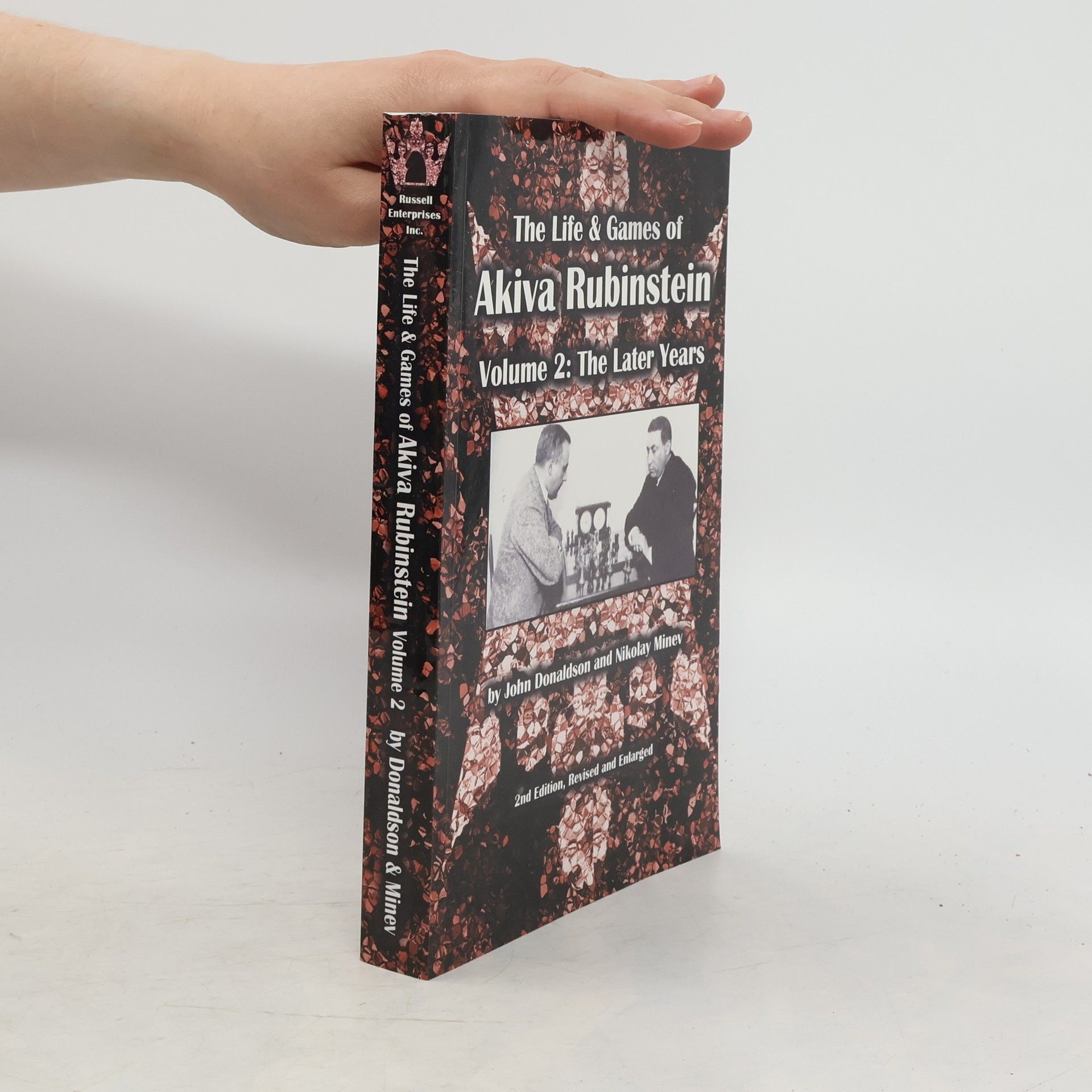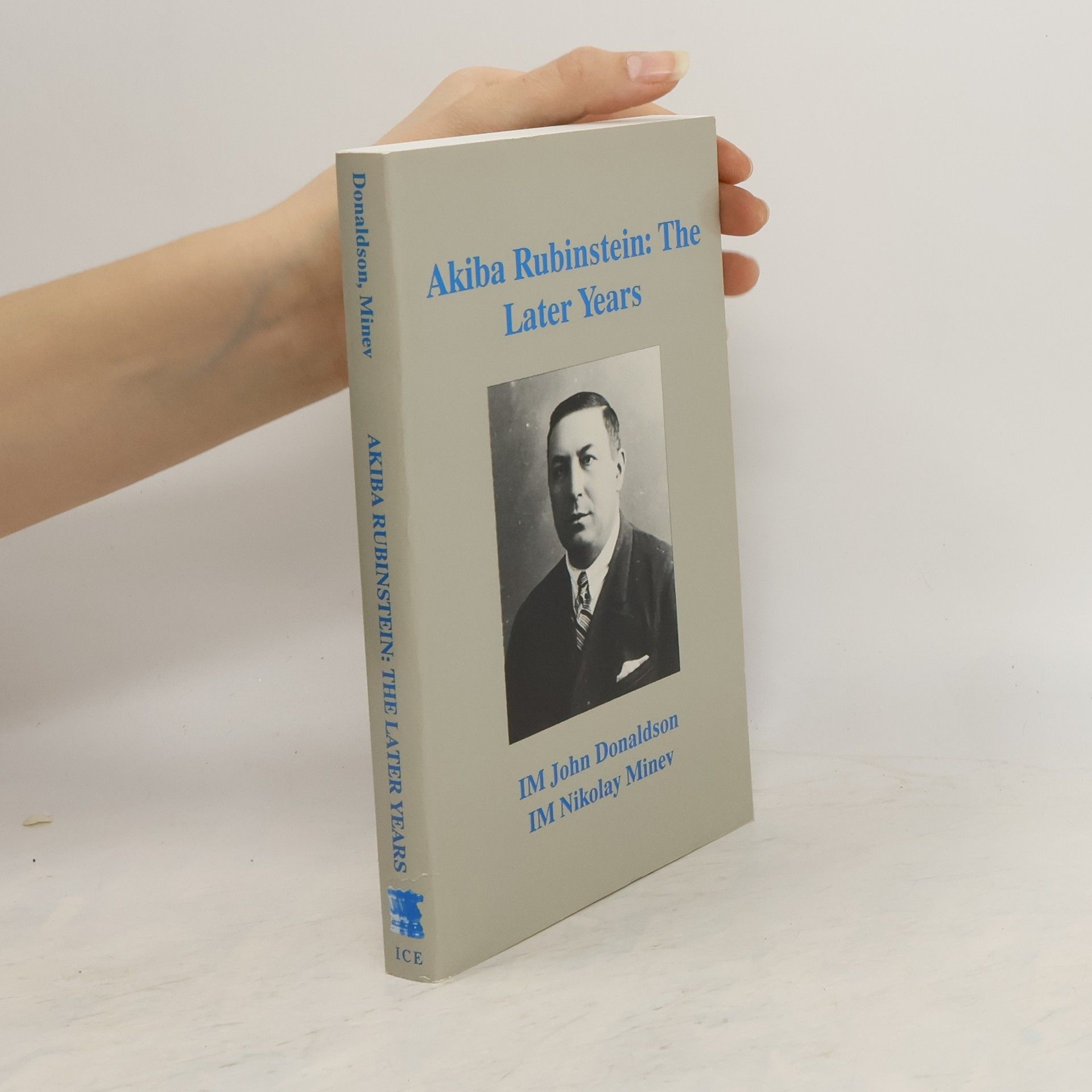Akiba Rubinstein: The Later Years
- 306pages
- 11 heures de lecture





In 1964 Bobby Fisher wasn't a complete unknown, not with six U.S. Championships to his credit -- including a scintillating 11-0 in the 1963/64 affair -- but U.S. chess players had never had a real opportunity to see him in action up close. During his 1964 exhibition tour, he barnstormed the U.S. and Canada from coast to coast, and his entertaining lectures, high level of play and personable manner won him many new admirers. This is a comprehensive look at the tour with newspaper reports, magazine articles, personal reminiscences and lots of games, many of which have never been published before. This second edition features new material including a recently rediscovered exhibition in Indianapolis, first-hand accounts from San Francisco, Little Rock and Pittsburgh, several games, plus photos and artifacts as well as corrections. It's is a treasure trove for every Fischer fan.
The Great Rubinstein Volume Two Akiva Rubinstein occupies a unique position in chess history. On of the greatest artists ever to sit down at a chessboard, Rubinstein was also the strongest player never to get an opportunity to play for the title of World Champion. This greatly enlarged second edition chronicles the second half (1921-1961) of the Polish grandmaster's life. Dozens of archival photographs, photographs and approximately 40% more material finish off this splendid work, completing the journey begun in volume 1.
Many players are attracted to the Dragon Sicilian, but are put off by the fierce mating attacks that White can launch. In the Accelerated Dragon, Black aims for an improved version, saving a move with his queen's pawn. If White tries to ignore the difference, Black's instant detonation of the centre will come as an unwelcome cold shower! The authors show that White's main reply, the Maroczy Bind, is not so fearsome as was once thought. Black has many ways to break out, while quite often it is possible to manoeuvre around White's 'binding' pawns and show that they imprison White's pieces as much as they do Black's. Written by two outstanding experts on the Accelerated Dragon, this book offers complete coverage of all lines of the Accelerated Dragon and many ideas for breaking the critical Maroczy Bind. International Master John Donaldson is Associate Editor of the acclaimed magazine inside Chess (Seattle). He is the author of several books, including theoretical opening works and painstakingly researched player biographies. He plays regularly and successfully in North American tournaments. International Master Jeremy Silman is co-author (with Yasser Seirawan) of Microsoft Press's series of chess books, and author of several openings books. (320 pages, 5 3/4' X 8 1/4')
"A portrait of world chess champion Bobby Fischer from his first tournament in Brooklyn, New York to his final years in Iceland. Written by International Master John Donaldson, the book includes first-hand accounts from top players who knew, played again, anf interacted with Fischer. The book also includes 99 annotated games with new analysis-some of these games have never been published before. Illustrated with over 100 B&W photos"--